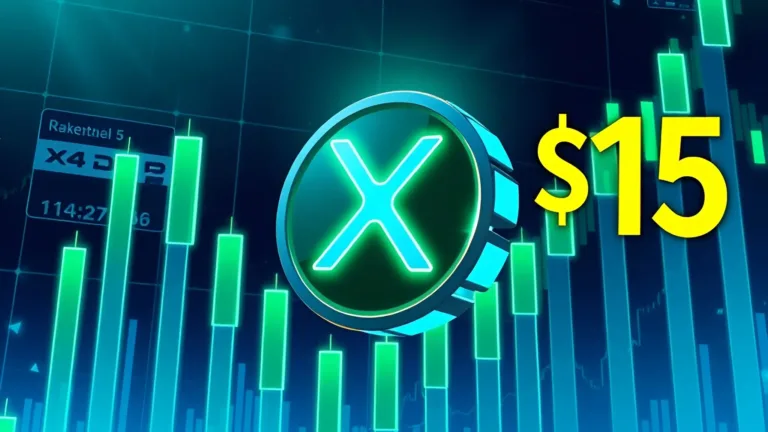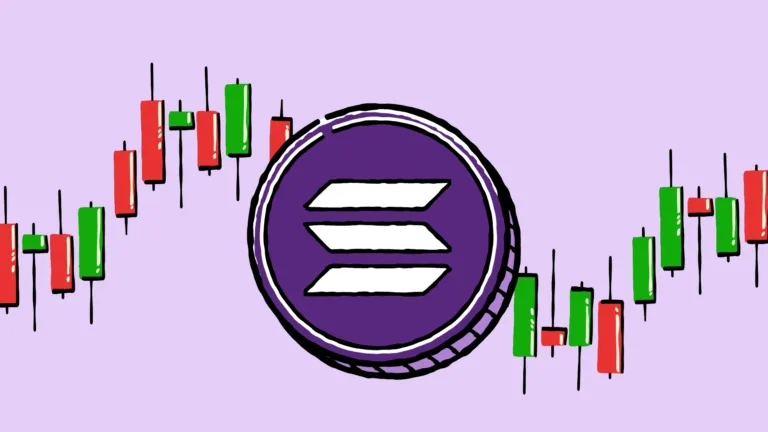Thriving Through the Storm: Why XRP Is Still a Go-To Investment
The crypto world? It’s basically a parallel universe—fast, wild, and full of surprises. Prices can spike or crash within minutes.
And XRP, the native token of the XRP Ledger, is no exception. Sometimes it’s the golden child, sometimes it’s under pressure from market swings or legal drama.
But here’s the interesting part: even through all that price volatility, a ton of investors are still holding onto XRP.
Why? Because they believe the true value of XRP runs way deeper than just what shows up on a candlestick chart.
It’s not just about hype—it’s about fundamentals, use cases, and a growing ecosystem that has serious potential.
Quick Facts You Need to Know
Hide-
Institutional Adoption: Big firms and asset managers are launching XRP ETPs and holding XRP in reserves.
-
Real Utility: XRP is used globally for low-cost, lightning-fast cross-border payments.
-
Legal Clarity: Ripple’s win over the SEC boosts long-term trust and compliance.
-
Liquidity & Market Cap: XRP offers deep liquidity, perfect for large-volume trades.
-
Speed & Fees: XRP processes transactions in seconds with negligible fees.
-
Long-Term Holders: More people are holding XRP for months, reflecting belief in its recovery and future.
-
Innovative Ecosystem: New features and stablecoins like RLUSD are adding utility and expanding XRP’s financial ecosystem.
Let’s break down the seven biggest reasons why so many people still trust in XRP—even when the market gets shaky.
1. Institutional Adoption: From WisdomTree to Treasury Reserves
Let’s start with the big leagues—institutional adoption. This isn’t about casual retail investors chasing pumps.
We’re talking about heavyweight players like WisdomTree, which launched XRP-based ETPs (Exchange-Traded Products) on major European exchanges.
That means investing in XRP is now a whole lot more regulated and accessible for big asset managers.
These ETPs come with added layers of security, ultra-low management fees (0.50%), and full cold storage custody. Translation? Big institutions consider XRP safe and worth putting in their portfolios.
Some companies are even stacking XRP in their treasury reserves—just like they do with gold. In an uncertain global economy, organizations are looking for assets that are fast, cheap, and borderless.
XRP checks all those boxes. This isn’t just market buzz—it’s proof that XRP is earning serious respect at the corporate level.
2. Real-World Use Case: Cross-Border Transfers in a Blink
Let’s talk utility. Traditional cross-border transfers—think SWIFT—are slow, expensive, and outdated.
We’re talking 2–5 business days to send money, plus ridiculous fees, especially if it hits a weekend or holiday. XRP? It settles in 3–5 seconds. And it costs less than $0.01.
This isn’t just theory. Ripple, the company behind XRP, has built a global payment network called RippleNet that already powers real-time transfers across countries.
Major banks and fintechs are using it to make global payments faster, cheaper, and smoother.
And get this—XRP Ledger can handle up to 1,500 transactions per second (TPS). That’s way ahead of many other blockchains still stuck in the slow lane.
3. Regulatory Clarity: Ripple Just Beat the SEC
If you’ve followed crypto news, you’ve probably seen the legal rollercoaster between Ripple and the SEC.
The U.S. regulator accused XRP of being an unregistered security. Ripple fought back—hard—and ended up scoring a huge win. The SEC officially dropped its appeal.
That wasn’t just a win for Ripple—it was a win for the entire crypto industry. XRP now has a clear legal status in the U.S., the biggest financial market in the world.
And the impact was immediate—XRP’s price spiked, market confidence surged, and exchanges that had delisted XRP started adding it back.
For long-term investors, legal clarity like this is gold. It means XRP can trade freely and be used openly without fear of getting shut down by regulators.
4. High Liquidity & Market Cap: Easy In, Easy Out
When big money gets involved, liquidity is a non-negotiable. Large investors don’t want to get stuck in low-volume assets.
XRP once ranked in the top three cryptos with a market cap of over $130 billion, and even now, it stays strong in the top 10.
This kind of liquidity makes XRP super appealing for fund managers, pro traders, and even banks. They can enter and exit large positions without disrupting the market.
While many smaller crypto projects struggle with thin trading volumes, XRP operates more like a four-lane highway—high traffic, but smooth flow.
5. Speed & Fees: Efficiency That Actually Matters
Let’s do a quick side-by-side:
| Crypto Asset | TPS (Transactions Per Second) | Confirmation Time | Avg. Fee |
|---|---|---|---|
| Bitcoin | ~7 | ~10 minutes | $1–$20 |
| Ethereum | ~30 | 15 sec–minutes | $1–$50 |
| XRP | ~1,500 | 3–5 seconds | < $0.01 |
These aren’t just numbers—they’re real-world performance. XRP uses a unique consensus model instead of energy-intensive mining.
That means faster processing, lower fees, and a far smaller environmental impact. It’s built for a digital financial future that values speed and simplicity without sacrificing security.
6. More HODLers, Less Panic: From Day Traders to Believers
One of the strongest signals of trust in a crypto project is how long people hold it. On-chain data shows that more and more XRP holders are keeping their tokens for 3–6 months or longer.
That’s a big deal—it means they’re not just flipping it for a quick profit. They’re betting on the long game.
The more people hold, the less circulating supply hits the market, which can help reduce selling pressure and stabilize prices.
In a market known for wild swings, XRP’s loyal community of HODLers plays a huge role in keeping things grounded.
And this isn’t just a trend—this community has weathered bull runs, bear markets, and lawsuits. Still standing.
7. Innovative Ecosystem: RLUSD, Tokenization & the Future of XRPL
Ripple isn’t just sitting around. Their latest move? Launching RLUSD, a U.S. dollar-backed stablecoin designed for speed, security, and compliance.
This expands XRP’s utility in the world of DeFi, tokenized assets, and digital settlements.
And that’s not all. At the Apex 2025 conference, Ripple rolled out a roadmap that includes upgrades to the XRP Ledger: things like compliance tools, tokenized bonds, permissioned domains, and even built-in automated market makers (AMMs).
These features are being developed to bring in more developers, fintechs, and institutions to build on XRPL.
So no, XRP isn’t just about moving money. It’s becoming a full-on platform for building the next-gen financial system—transparent, fast, and decentralized.
Closing Thoughts: XRP’s Long Game
Volatility is baked into crypto’s DNA. But what makes XRP different is the foundation behind the chaos.
With institutional backing, real-world utility, legal clarity, killer transaction performance, a strong HODL community, and a fast-growing ecosystem—it’s clear why so many people are bullish on XRP.
If you’re looking to get into crypto for more than just a quick pump and dump, XRP might just be the asset with a vision, not just a price tag. Just make sure to do your research, know the risks, and understand the tech.
But for those who’ve been watching XRP evolve, there are plenty of reasons to believe its best days are still ahead.
Frequently Asked Questions (FAQs)
Is XRP safe for retail investors?
Compared to more volatile altcoins, XRP offers higher liquidity, legal clarity (post-SEC case), and real-world utility. But like all crypto assets, it still carries market risks.
How can I buy XRP with low fees?
Use centralized or decentralized exchanges that support XRP with low trading fees, or transact directly on the XRP Ledger for on-chain costs under $0.01.
What impact did the SEC lawsuit have on XRP?
Huge. The SEC dropping its appeal gave XRP legal clarity in the U.S., boosting investor confidence and enabling re-listing on major exchanges.
How does XRP compare to stablecoins?
XRP isn’t a stablecoin, but it’s faster and cheaper for transactions than most stablecoins. RLUSD (Ripple’s USD-backed stablecoin) complements XRP for stable-value needs.
Are institutions really investing in XRP?
Yes—products like WisdomTree’s XRP ETPs on European stock exchanges show strong institutional interest and regulated entry points for big players.






